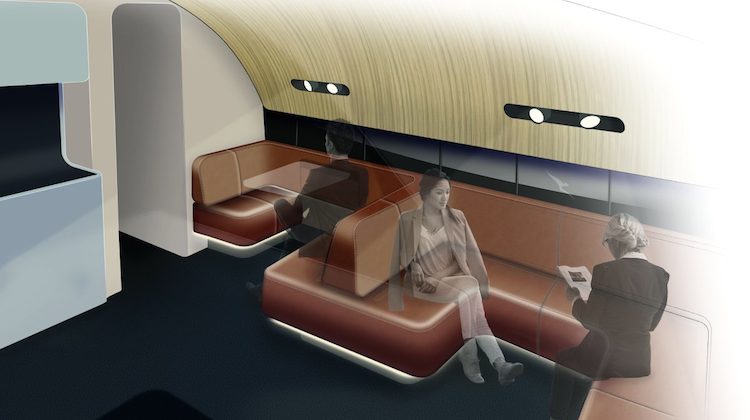
Qantas is lifting the number of premium seats on its Airbus A380 fleet to a similar level as will be seen on its soon-to-be-delivered Boeing 787-9s.
The A380s will undergo a cabin refurbishment beginning in the second quarter of calendar 2019, with the 12 aircraft to feature new business class and premium economy seats in line with what is being installed on its 787-9s, a refreshed first class cabin and new cushions and fabrics in economy.

The work was expected to be completed by the end of 2020, Qantas said on Friday.
While the total number of seats is being increased by one to 485, the split between the four cabin classes is changing.
First class stays the same at 14 seats, while the business cabin will expand to 70 seats, from 64 currently and feature the airline’s latest seat being installed on the 787-9.
There is a big increase in premium economy from 35 to 60 seats, while the economy cabin is being cut by 30 seats to 341 seats.

The upper deck will be reconfigured to only business and premium economy cabins, while first and economy will be on the lower deck.
Under the new configuration, the percentage of premium seats on Qantas’s A380s rises to 30 per cent of all seats – the same as on the three-class 787-9s featuring business, premium economy and economy – compared with 23 per cent currently. (See chart below.)
The lounge at the front of the A380 upper deck is also being enlarged.

Qantas said a more efficient use of space allowed the airline to boost the number of premium seats on board the aircraft.
Further, it said the design integration would be managed by Airbus.
Qantas chief executive said there has been increased demand for business class and premium economy on A380 routes, which are primarily to London Heathrow and the United States, including from travellers using points to upgrade.
“Working with Airbus we’ve been able to achieve a very efficient layout on the upper deck. Using this space to increase the proportion of premium seating improves the revenue potential and the overall economics of the aircraft,” Joyce said at Qantas’s full year results presentation.
“When you combine this upgrade with the other investments we’ve been making in new aircraft and new cabins, it will give us consistency with our premium seats across the A380, A330 and incoming 787 Dreamliner.”
Airbus unveiled an updated version at the recent Paris Airshow to help improve the aircraft’s operating economics and perhaps attract new orders for the program.
The initiatives, packaged tougher as A380plus, cover maintenance, aerodynamic changes to the wing and so-called “cabin enablers” to add more seats.
Airbus said up to 80 more seats could be squeezed into the cabin through measures such as an 11-abreast economy and nine-abreast premium economy on the lower deck, new stairs, the removal of sidewall stowage bins on the upper deck and a combined crew rest compartment.
Meanwhile, Qantas said it would upgrade the remaining two Airbus A330-200s – VH-EBG and VH-EBL – that feature the older economy and business class seats after extending their leases. The airline paused its A330 reconfiguration program after upgraded 26 of its 28 A330-200/300 fleet.
The oneworld alliance member also announced its Melbourne domestic Qantas club and business lounge would be redeveloped, with work to begin in November and take about 12 months to complete.
Qantas aircraft |
First |
Business |
Premium |
Economy |
Total |
Percentage premium |
|
Airbus A380 (old configuration) |
14 |
64 |
35 |
371 |
484 |
23% |
|
Airbus A380 (new configuration) |
14 |
70 |
60 |
341 |
485 |
30% |
|
Airbus A330-300 |
0 |
28 |
0 |
269 |
297 |
9% |
|
Airbus A330-200 |
0 |
28 |
0 |
243 |
271 |
10% |
|
Boeing 747-400ER |
0 |
58 |
36 |
270 |
364 |
25% |
|
Boeing 787-9 |
0 |
42 |
28 |
166 |
236 |
30% |
Source: Qantas










